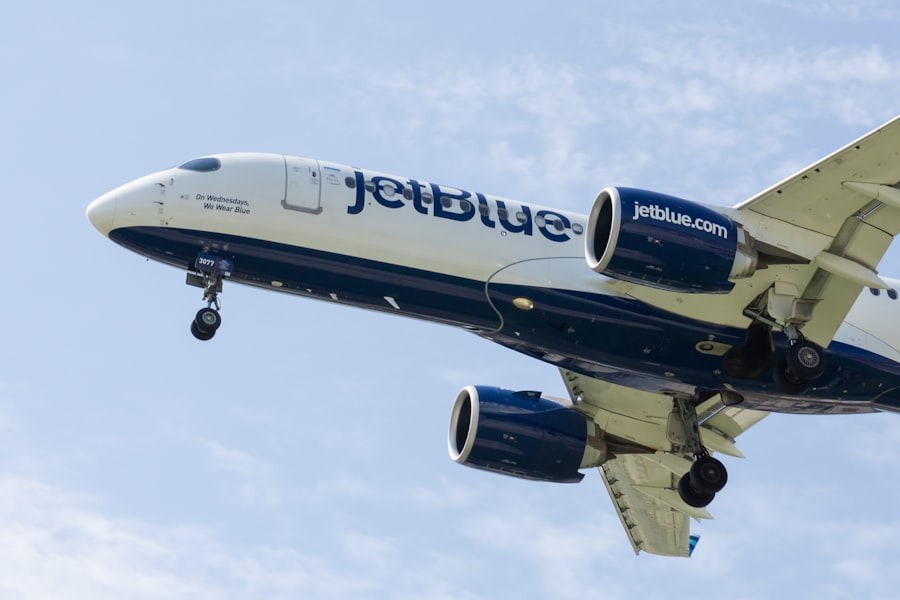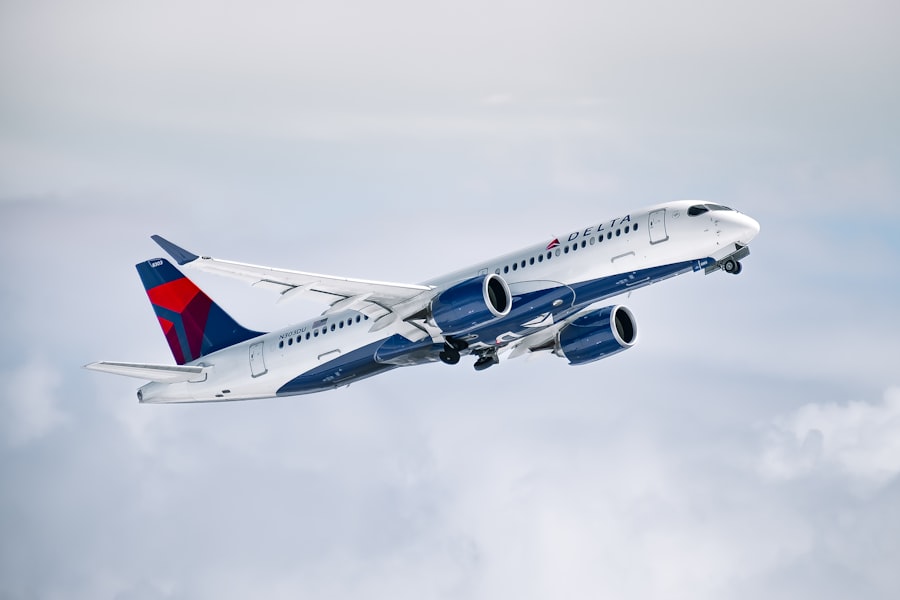The Airbus A220, originally developed by Bombardier as the CSeries, represents a significant evolution in the realm of regional and narrow-body aircraft. Launched into service in 2016, the A220 was designed to meet the growing demand for efficient, high-performance jets that can operate on shorter routes while providing a level of comfort and technology that rivals larger aircraft. With its advanced aerodynamics, state-of-the-art materials, and innovative systems, the A220 has quickly garnered attention from airlines and passengers alike.
Its introduction marked a pivotal moment in aviation, as it not only filled a niche in the market but also set new standards for fuel efficiency and passenger experience. The A220 family consists of two main variants: the A220-100 and the A220-300. The former is designed to accommodate around 100 passengers, while the latter can seat up to 130.
This flexibility allows airlines to tailor their fleets to specific route demands, making the A220 an attractive option for both regional carriers and larger airlines looking to optimize their operations. As air travel continues to rebound post-pandemic, the A220 stands out as a beacon of innovation, promising to reshape how airlines approach regional and short-haul routes.
Key Takeaways
- The Airbus A220 is a narrow-body, twin-engine jet airliner designed for short to medium-haul flights, previously known as the Bombardier CSeries.
- The design and features of the Airbus A220 focus on fuel efficiency, advanced aerodynamics, and a spacious cabin with large windows and overhead storage.
- The Airbus A220 has a lower environmental impact compared to other aircraft, with reduced fuel consumption and emissions, making it a more sustainable option for airlines.
- Passengers can expect a comfortable and enjoyable experience on the Airbus A220, with wider seats, larger windows, and a quieter cabin due to its advanced noise reduction technology.
- The Airbus A220 offers superior efficiency and performance, with lower operating costs, longer range, and the ability to operate on shorter runways, making it a versatile and cost-effective option for airlines.
The Design and Features of the Airbus A220
The design of the Airbus A220 is a testament to modern engineering, combining sleek aesthetics with functional performance. One of its most striking features is its spacious cabin, which is wider than that of many competing aircraft in its class. This additional width allows for larger windows, enhancing natural light and providing passengers with a more open feel.
The cabin is also designed with a focus on passenger comfort, featuring larger overhead bins that can accommodate more carry-on luggage, thus reducing boarding times and improving overall efficiency. Aerodynamically, the A220 boasts a clean wing design with advanced winglets that contribute to its impressive fuel efficiency. The aircraft is powered by Pratt & Whitney’s PW1500G geared turbofan engines, which are known for their low noise levels and reduced emissions.
These engines not only enhance performance but also play a crucial role in minimizing the aircraft’s environmental footprint. The combination of these design elements results in an aircraft that is not only visually appealing but also highly functional, capable of operating efficiently across various flight profiles.
The Environmental Impact of the Airbus A220

In an era where environmental sustainability is paramount, the Airbus A220 stands out as a leader in reducing aviation’s carbon footprint. The aircraft is designed to be approximately 20% more fuel-efficient than its closest competitors, thanks in large part to its advanced engine technology and aerodynamic design. This efficiency translates into lower greenhouse gas emissions per passenger mile, making it an attractive option for airlines committed to sustainability.
Moreover, the A220’s use of lightweight composite materials contributes significantly to its overall efficiency. By reducing the aircraft’s weight, these materials allow for lower fuel consumption without compromising structural integrity or safety. Additionally, the A220’s engines are equipped with noise-reducing technologies that help minimize noise pollution around airports, addressing one of the key concerns associated with air travel.
As airlines increasingly prioritize sustainability in their operations, the A220’s design aligns perfectly with these goals, positioning it as a vital player in the industry’s efforts to combat climate change.
The Comfort and Passenger Experience on the Airbus A220
| Aspect | Rating |
|---|---|
| Cabin Width | 18.5 inches |
| Seat Pitch | 30-32 inches |
| Noise Level | 20 dB lower than similar aircraft |
| Overhead Bin Space | 40% more capacity |
| Windows | Larger and positioned higher for better views |
Passenger experience is a critical factor in the design of modern aircraft, and the Airbus A220 excels in this area. The cabin layout is thoughtfully designed to enhance comfort during flights, with wider seats and more legroom compared to many other regional jets. The aircraft’s configuration allows for a 2-3 seating arrangement, which not only provides passengers with more space but also simplifies boarding and deplaning processes.
In-flight amenities further elevate the passenger experience on the A220. Many airlines have equipped their A220s with modern entertainment systems that offer a variety of options for passengers to enjoy during their journey. Additionally, the cabin is designed to maintain optimal humidity levels and lower cabin altitude, which can significantly reduce passenger fatigue on longer flights.
These features collectively create an environment that prioritizes comfort and satisfaction, making air travel more enjoyable for passengers.
The Efficiency and Performance of the Airbus A220
The performance metrics of the Airbus A220 are impressive and contribute significantly to its appeal among airlines. With a maximum range of approximately 3,400 nautical miles for the A220-300 variant, it can efficiently serve both short-haul and medium-haul routes without requiring frequent stops for refueling. This versatility allows airlines to optimize their route networks and respond effectively to changing market demands.
Fuel efficiency is another hallmark of the A220’s performance. The aircraft’s advanced engines and aerodynamic design result in lower operational costs for airlines, which is particularly important in an industry where margins can be tight. The ability to carry more passengers while consuming less fuel not only benefits airlines financially but also enhances their competitiveness in an increasingly crowded market.
Furthermore, the A220’s operational flexibility allows it to access airports with shorter runways, expanding route possibilities and enabling airlines to tap into underserved markets.
The Role of the Airbus A220 in the Future of Air Travel

As air travel continues to evolve, the Airbus A220 is poised to play a significant role in shaping its future. With increasing emphasis on sustainability and efficiency, this aircraft aligns perfectly with industry trends aimed at reducing environmental impact while maintaining high levels of service. Airlines are increasingly looking for ways to modernize their fleets with aircraft that can meet both operational needs and environmental goals, making the A220 an attractive option.
Moreover, as global travel demand rebounds post-pandemic, there is a growing need for aircraft that can efficiently connect smaller markets with major hubs. The A220’s range and capacity make it ideal for this purpose, allowing airlines to serve routes that may have previously been unprofitable with larger jets. This capability not only enhances connectivity but also supports regional economies by facilitating travel and commerce.
The Market Demand for the Airbus A220
The market demand for the Airbus A220 has been robust since its introduction, reflecting a shift in airline strategies towards more efficient fleet compositions. Airlines are increasingly recognizing the value of operating smaller jets that can serve niche markets while still offering competitive performance on longer routes. This trend has been particularly evident in North America and Europe, where regional carriers have embraced the A220 as a means to modernize their fleets.
Several major airlines have already incorporated the A220 into their operations, citing its operational efficiency and passenger comfort as key factors in their decision-making process. For instance, Delta Air Lines has made significant investments in the A220 fleet, recognizing its potential to enhance service on both short-haul and medium-haul routes. Similarly, Air Canada has integrated the aircraft into its regional operations, further validating its appeal across different markets.
The Potential of the Airbus A220 in Shaping the Future of Air Travel
The Airbus A220 represents a significant advancement in aviation technology and design, offering a compelling solution for airlines navigating an increasingly complex landscape. Its combination of efficiency, performance, and passenger comfort positions it as a frontrunner in meeting contemporary demands for air travel. As airlines continue to prioritize sustainability and operational flexibility, the A220’s role will likely expand further.
With its innovative features and commitment to reducing environmental impact, the Airbus A220 is not just another aircraft; it is a harbinger of change within the aviation industry. As we look toward the future of air travel, it is clear that aircraft like the A220 will play an essential role in shaping how we connect across distances while addressing pressing environmental concerns. The ongoing success of this aircraft will undoubtedly influence future designs and operational strategies within commercial aviation.


